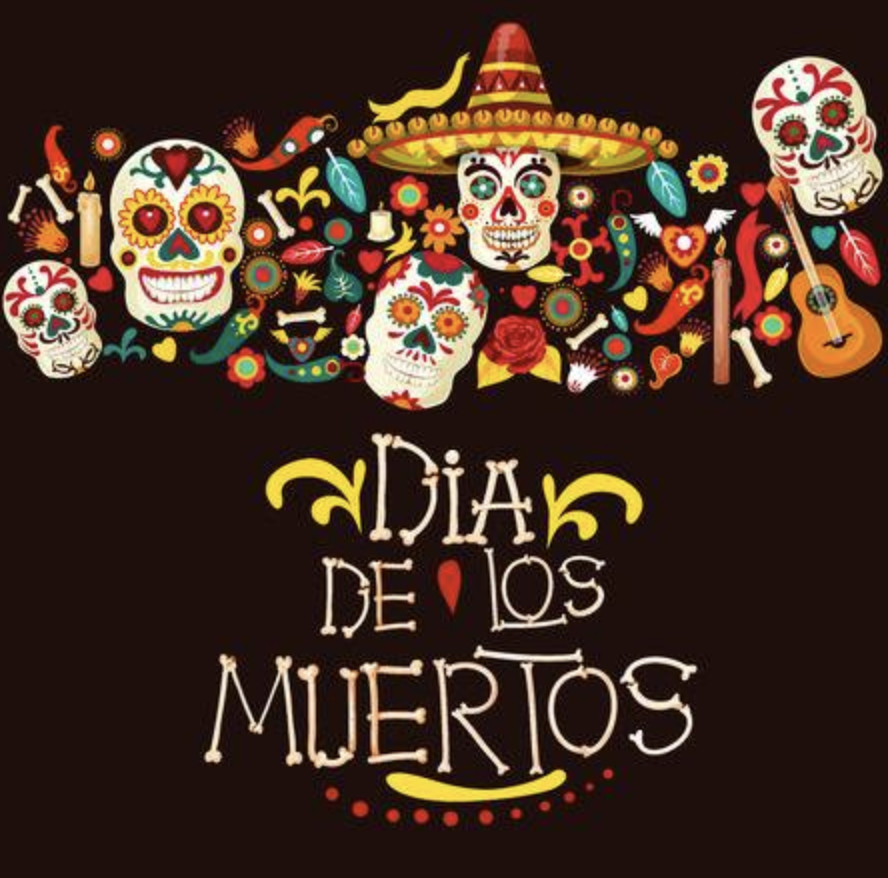Día de Muertos
December 5, 2020
On Sunday November 1st, families across Mexico and the United States celebrated Día de Muertos, a Mexican holiday that honors the lives of those who have passed away while also welcoming back their souls to return for the night.
This tradition dates back to 3,000 years ago, when the rituals by the Aztecs and other Nahua people first took place in pre-Columbian Mesoamerica. They had a cyclical view of the universe. Beginning with dying, a person was believed to travel to Chicunamictlán, which is the Land of the Dead. After going through nine challenging stages, and a journey of several years, the person’s soul would finally reach Mictlán, the final resting place. However, according to tradition, on Día de Muertos, it is believed that the gates of heaven fade away on midnight of October 31 and the spirits of the deceased children can return and reunite with their families in a celebration that includes food and drinks. The same is celebrated for all souls on November 1st through November 2nd.
There are very specific foods and drinks that are prepared for the celebration. One of the most popular foods being Pan de Muerto; a Mexican sweet bread that can only be found during the weeks leading up to Día de Muertos. A corn based drink called atolé is also consumed with spicy dark chocolate. Most of these foods are displayed on the ofrendas.
An ofrenda, also known as an altar, is the centerpiece of the celebration. They are meant to guide the spirits back to their destination in the land of the living with their beautiful decorations and offerings, which include the person’s favorite foods, some personal items, and candles to light up the ofrenda. There are marigolds placed on the ofrenda because they are believed to attract the spirits back home with their strong scent, they can be called, “flowers of the dead.” More decorations that are the most recognizable symbols of Dia de Muertos are the Calaveras and the Papel Picado. Calaveras are sugar skulls that are decorated to represent the people who are being honored, they are meant to symbolize the sweetness of life. Papel picado can be seen in many Mexican environments. They are banners with special designs and skeleton figures cut through them, they are often bright colors and very delicate. Their delicacy is meant to represent the fragility of life.
A common way for the Latinx people to celebrate the holiday is with face painting. The paintings are most commonly sugar skull designs but they are not meant to be scary. Their bright colors and design are meant to appear friendly and celebratory of death. The Latinx people believe that death is not something that should be feared, but celebrated.
Another way that Latinx people celebrate the holiday is by wearing long, colorful floral dresses and solid colored suits with floral headpieces and black hats. These outfits were all inspirations from the clothing of La Calavera Catrina.
La Catrina is an ancient drawing by artist José Guadalupe Posada. It is a female skeleton wearing fancy clothing. The significance of the drawing was the message that it illustrated; no matter how rich or poor you appear, you will still end up as a skeleton. This image then become one of the most recognizable symbols of Día de Muertos, and the outfits people wear on this day are all inspired by this drawing.
As the years go on, this celebration becomes more popular throughout Mexico, the United States and other parts of the world. It is a way for families to remember and honor their loved ones who have passed from this world, while also bringing light and celebration to death.
